Weather
Using gnats to predict the weather
Birds, insects, and reptiles provide a host of minor prophets, most of them with a gloomy message to proclaim. The noisy quacking of ducks and geese, the croaking of frogs, the loud singing of the missel-thrush, and the crawling of the toad across the road at dusk are one and all harbingers of rain.
The spider is the most interesting barometer. She prepares for wind by shortening the main filaments of her web. When these are unusually long, fine weather may be expected to last for 10 or 12 days. Very rarely is the web left alone for more than 24 hours. Complete cessation of work is said to be a sign of wet, but if activities are resumed during the rain it is an indication that the shower will not last long and will be followed by a spell of settled weather.

Nottingham Evening Post - July 23, 1956
click to enlarge
Posted By: Alex - Thu Feb 16, 2023 -
Comments (3)
Category: Insects and Spiders, Weather
Weather Control Commission
In 1950, Senator Clinton P. Anderson of New Mexico introduced a bill in the Senate to create a federal "Weather Control Commission" modeled after the Atomic Energy Commission. Its purpose would be to regulate and license rainmaking activities in order to ensure the "equitable distribution of precipitation among the States." It would also study military applications of weather control.Anderson didn't get his Weather Control Commission, though in 1953 the federal government did create an Advisory Committee on Weather Control. And of course there are all those conspiracy theories alleging that the government is using the HAARP station up in Alaska to control the weather.
More info: Congressional Hearings, March 1951

Baltimore Sun - Dec 10, 1950
Posted By: Alex - Mon Oct 03, 2022 -
Comments (4)
Category: Government, 1950s, Weather
Anti-Hurricane Barges
Back in 2005, MIT researcher Moshe Alamaro came up with an oddball idea to fight hurricanes: use barges equipped with upward-pointing jet engines to create tropical storms in their path. Details from The Salina Journal (July 2, 2005):After operating for about half a day, the updraft would create a tropical storm of its own. This would cool the water through which the advancing hurricane would move and so rob a potentially deadly storm of some strength. Alamaro said there's more than an ample supply of unused jet engines on the mothballed fleets of Cold War bombers now rusting in desert junkyards in Arizona and Nevada.
Alamaro said a 10 percent reduction in a hurricane's wind speed would result in a 50 percent reduction in its power when the storm hits landfall. If it works the way Alamaro and his colleagues suggest, residents of the Atlantic and Caribbean shores might one day experience more tropical storms, but not so many hurricanes.
"What we want to do is create several tropical storms to replace the hurricane. It would not stop it completely," he said.
Maybe this would work. Or maybe the artificial tropical storms would themselves turn into hurricanes? Since Alamaro estimated it would cost around $1 billion a year to do this, it's unlikely his idea will be tested any time soon.
More info: The Economist - June 11, 2005

Posted By: Alex - Sat Oct 01, 2022 -
Comments (1)
Category: Weather
The Umbrella Man of Seattle
A great eccentric figure from the past.Good long article here with many illos.
The shorter Wikipedia page.
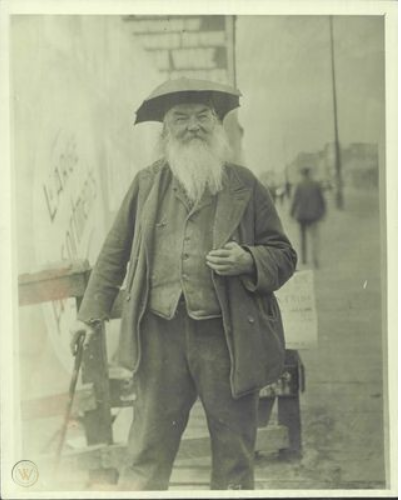
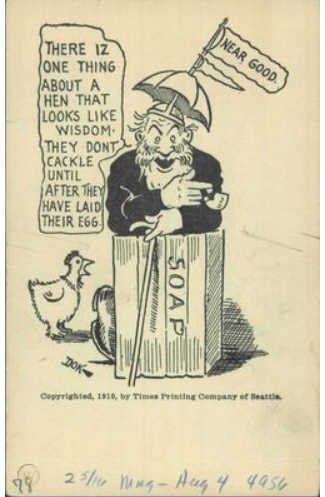
Posted By: Paul - Sun Jul 17, 2022 -
Comments (0)
Category: Eccentrics, Regionalism, Weather, Nineteenth Century, Twentieth Century
Lightning Rod Hat
AKA "Le chapeau paratonnerre." Details from Amelia Soth on JStor Daily:
image source: wikimedia
A more recent version of a lightning-rod hat:
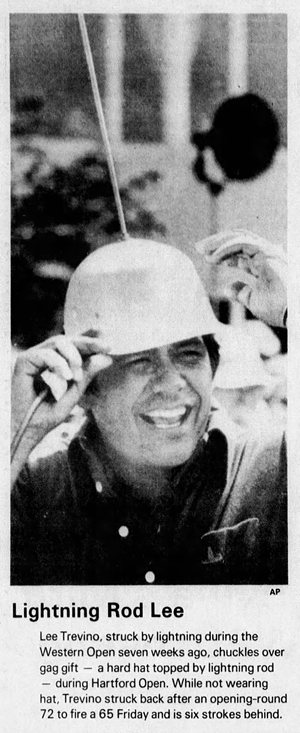
Tampa Bay Times - Aug 16, 1975
Posted By: Alex - Tue Jun 21, 2022 -
Comments (0)
Category: Headgear, Weather, Eighteenth Century
When your hair stands on end
On August 20, 1975, the McQuilken siblings were hiking in Sequoia National Park when their hair started to stand on end. They paused to take a photo of the unusual phenomenon. The top photo shows the two brothers, Sean and Michael. The bottom one shows their sister Mary.A few minutes after taking these photos, lightning struck Sean and Michael. Luckily, they both survived.
The photos are now used in a pamphlet published by the National Weather Service describing lightning warning signs.



Michael McQuilken later wrote an article about his recollections of that day (the article is now only accessible via the Internet Archive):
More info: NBC News
Posted By: Alex - Thu Apr 28, 2022 -
Comments (4)
Category: Weather
The Frozen Woman
Dec 20, 1980: On a cold winter's evening, 19-year-old Jean Hilliard's car got stuck in a ditch, so she decided to walk for help. She was found the next morning, two miles away, frozen solid.Remarkably, doctors were able to thaw her out even though she was so rock hard that needles broke on her skin. She suffered no serious injuries — just some blistered toes.
Read the full story at MPR News
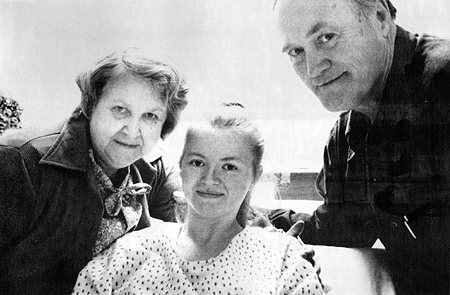
Posted By: Alex - Wed Mar 16, 2022 -
Comments (4)
Category: Human Marvels, 1980s, Weather
The Thingies: “Rainy Sunday Morning”
Read about this obscure psychedelic band here.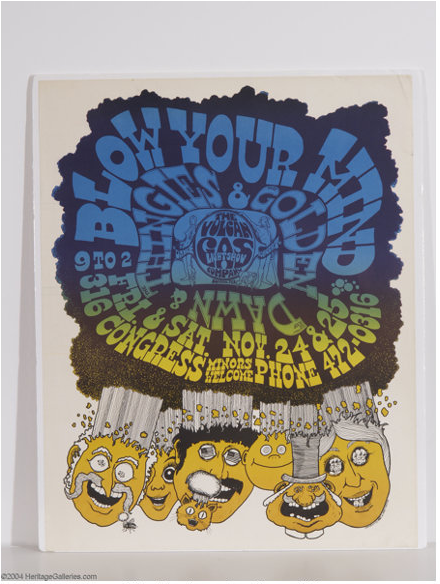
Posted By: Paul - Mon Jan 31, 2022 -
Comments (0)
Category: Music, Regionalism, Psychedelic, 1960s, Weather
Rain Goggles For The Motorist
I'm surprised someone isn't selling a battery-operated version of these today as a gag gift. Wouldn't even need to be for motorists. Perfect for anyone out for a stroll in the rain.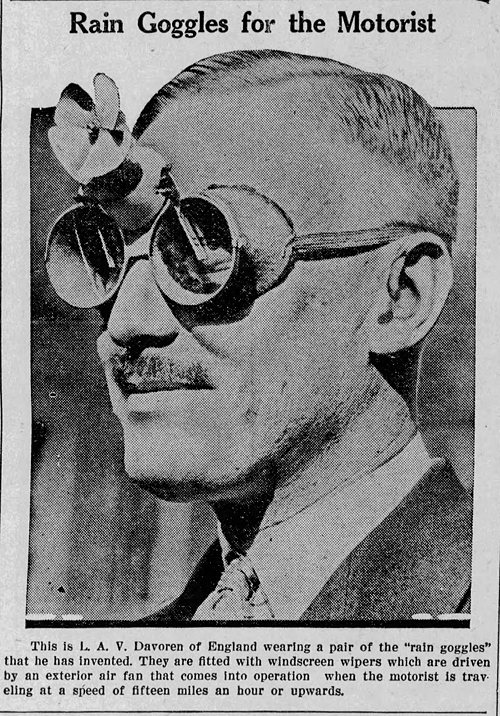
The Oklahoma Freedom Call - Feb 8, 1934
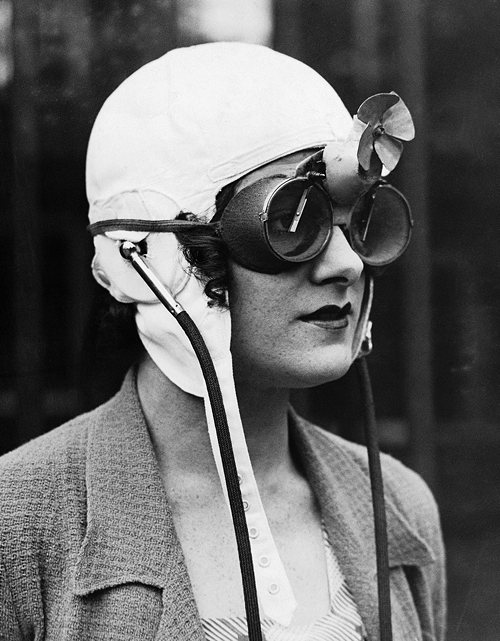
"Miss Paddie Naismith, noted English racing chauffeur, is shown wearing the very latest in motor modes, rain goggles, with wipers 'n' everything. A small fan, you can see it over the bridge of the nose, operates the wipers when the car is travelling at speeds in excess of 15 M.P.H. Its inventor is L.A.V. Davoren of London." — International News Photo, Oct 1933
image source: reddit
Posted By: Alex - Tue Dec 07, 2021 -
Comments (3)
Category: Inventions, 1930s, Weather, Eyes and Vision, Cars
Henry Kissinger, Weatherman
Henry Kissinger fulfilling his dream of being a weatherman.Info: Orlando Sentinel, May 15 1991
Posted By: Alex - Wed Dec 01, 2021 -
Comments (5)
Category: Television, Diplomacy and Foreign Relations, 1990s, Weather

| Who We Are |
|---|
| Alex Boese Alex is the creator and curator of the Museum of Hoaxes. He's also the author of various weird, non-fiction, science-themed books such as Elephants on Acid and Psychedelic Apes. Paul Di Filippo Paul has been paid to put weird ideas into fictional form for over thirty years, in his career as a noted science fiction writer. He has recently begun blogging on many curious topics with three fellow writers at The Inferior 4+1. Contact Us |




